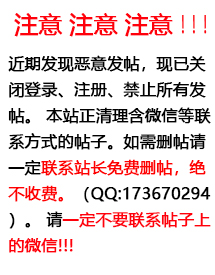


Brazilˇs rates:Six in the mix
In May 2016, we radically changed our forecasts in light of a change in government. Our end-2...



In May 2016, we radically changed our forecasts in light of a change in government. Our end-2017interest rate call of 9% at the time was met with much scepticism (please see, Brazil: Andnow for something completely different). Since then, the market consensus forecast has steadilydrifted our way. In fact, having been chased by consensus, we subsequently cut our terminalrate call to 8% (see Brazil’s rates: Aim lower), and then to 7% (see Brazil’s rates: Themagnificent seven). Again, our once-bold rate call has become quite popular now (see Chart 1). That worries us. While we love becoming consensus, we hate being consensus. For now, westop short of cutting our rate call yet again, given lingering uncertainties. Still, we strongly thinkrisks around our 7% rate call are biased to the downside, not upside. We would not be surprisedat all if the terminal policy rate in the current monetary easing cycle has a 6% handle. We see strong cyclical reasons for our rate call. First, Brazil’s real interest rates have averagedroughly 5% over the past 10years. With prospective inflation in the 3%-4% range, even a“neutral” real interest rate of about 5% would imply a neutral nominal rate in the 8%-9% range. Second, policy rates swing well beyond “neutral” over the cycle. In easing cycles, rates shouldfall below neutral. This is especially true today, in light of the huge output gap left by Brazil'sworst recession on record, and longer-run inflation expectations that are remarkablyre-anchored back to target, now that policymakers have managed to re-build previously lostcredibility. In order to gauge the role played by cyclical factors in determining Brazil’s policy rate, we haveestimated econometrically a Taylor rule for Brazil. It shows Brazil’s expected monetary policyreaction function in response to the output gap (growth deviations from potential) as well as tothe inflation gap (deviations of inflation expectations from official targets). The fit of the model is significant – in fact, deviations from actual policy rates from the model’sprediction during the latter years of the Dilma Rousseff administration illustrate how monetarypolicy during those days was much looser than objective conditions would justify. All things considered, taking into account cyclical prospects for inflation and growth, our Taylorrulemodel currently indicates that the policy rate could easily fall to the 6%-7% range,supporting our view that risks around our current 7% terminal rate call are to the downside. Insum, when it comes to prospects for the terminal rate call, six is now in the mix.
声明:如本站内容不慎侵犯了您的权益,请联系邮箱:wangshiyuan@epins.cn 我们将迅速删除。
 热词推荐
热词推荐
MORE+
- 1看似风雨飘摇,实则稳如老狗
- 2人民币贬值对股票有什么影响?人民币贬值
- 3什么是融资融券?什么是融资融券业务?
- 4今天一早这创业板是要遭到灭m吗?1300多只跌了1208多!周末出了个禁止限售出(易天股份300812)
- 5这个票一路跌下来,没有几个人是挣了钱的,在低位这样跌,就是想吸筹码 (科安达002972)
- 6西陇科学去年年底财务造假,被证卷会惩罚过.他属于黑名单上的股 (西陇科学002584)
- 7昨天跌停打开拉高,是有机构扛不住了,想借拉高出货,同时骗散户接盘[偷笑]但是从趋(海能达002583)
- 8海能达濒临破产。举步维艰。发展遇到了危机。但金融世界不乏绝地逢生案列。公司本身也(海能达002583)
- 9这种出个报告磨磨唧唧的,是特别不正常的,暗箱操作的公司这种特征非常明显,我记得康(好想你002582)
- 10单机柜超千万!广达电脑代工英伟达GB200!(N信音301329)
- 11板块上啦,你 是绩优股,若不回封,也没关系 滴,别盲目跟进哈!主力吃货4000万(通达动力002576)
- 12净值百亿的光伏新秀日月光能、借小壳上大市(明牌珠宝002574)
- 13美吉姆,今天成功上板,按照昨天计划今天低点上奈何没给机会,只能恭喜胆大的朋友们了(深中华A000017)
- 14金隅集团:尊敬的投资者您好!万亿增发国债资金已经基本落实到1.5万个具体项目,超(金隅股份601992)
- 15卧造!卧造!这榜一一家3000万独大,就这么个盘,它不出来没人会去接。所以想都不(华生科技605180)
- 16今日尾盘操作,明日主要做(商络电子300975)
- 17周五是黑色的!公布明天操作!(商络电子300975)
- 18商络电子,你以为主力能预测到首飞是否成功?!这是谁都不可能预测到的!所以上周五主(商络电子300975)
- 19四月中旬,路边的野花也要采续之:连续买入带盘中T,低空经济板块。(苏交科300284)
- 20今天重点看这几支(商络电子300975)
- 21商洛电子,连续涨停到25元钱。(商络电子300975)
- 22知行合一 首次减仓!(N华利300979)
- 23这个是小盘股,很容易被主力操控的,明天什么样的情况都可能发生。(龙高股份605086)
- 24这是在洗盘。看看我分析的有没有道理(立新能源001258)
- 25计划减持九联科技的通告(九联科技688609)
- 26陷阱还是机会(永茂泰605208)(04-26)
- 27相对低估的电力设备潜力股:1、总市值低,55亿,业绩优秀(去年3亿)今年大概率微(望变电气603191)
- 28我发现很多人真的不会炒股。变压器的毛利率才15左右,而变压器所需要的原材料硅钢6(望变电气603191)
- 29望变电气:最低估值的变压器明珠,变压器、取向硅钢、智能电网、储能、输配电多龙头,(望变电气603191)
- 30总结,不如预期,主力想拉升奈何形不成合力,只能反向砸盘,周一不反包就得走(王力安防605268)
- 上海贝岭股吧
- 浙大网新股吧
- 华东科技股吧
- 隧道股份股吧
- 深赛格股吧
- 光大银行股吧
- 中国银行股吧
- 永鼎股份股吧
- 苏州高新股吧
- 新安股份股吧
- 精达股份股吧
- 中国医药股吧
- 东风科技股吧
- 金健米业股吧
- 西部资源股吧
- 招商银行股吧
- 中联重科股吧
- 中国宝安股吧
- 中集集团股吧
- 德赛电池股吧
- 复星医药股吧
- 宇通客车股吧
- 中国建筑股吧
- 葛洲坝股吧
- 大唐电信股吧
- 华丽家族股吧
- 罗牛山股吧
- 中色股份股吧
- 京东方A股吧
- 新疆天业股吧
- 天坛生物股吧
- 抚顺特钢股吧
- 锦龙股份股吧
- 云天化股吧
- 振华科技股吧
- 国中水务股吧
- 华发股份股吧
- 飞乐音响股吧
- 青岛双星股吧
- 中国核电股吧
- 中国中铁股吧
- 西部矿业股吧
- 时代新材股吧
- 科达股份股吧
- 士兰微股吧
- 浦发银行股吧
- 中金黄金股吧
- 哈投股份股吧
- 航天晨光股吧
- 同仁堂股吧
- 维维股份股吧
- 福耀玻璃股吧
- 新五丰股吧
- 中航资本股吧
- 中金岭南股吧
- 丰原药业股吧
- 四环生物股吧
- 哈药股份股吧
- 万向钱潮股吧
- 中国高科股吧


